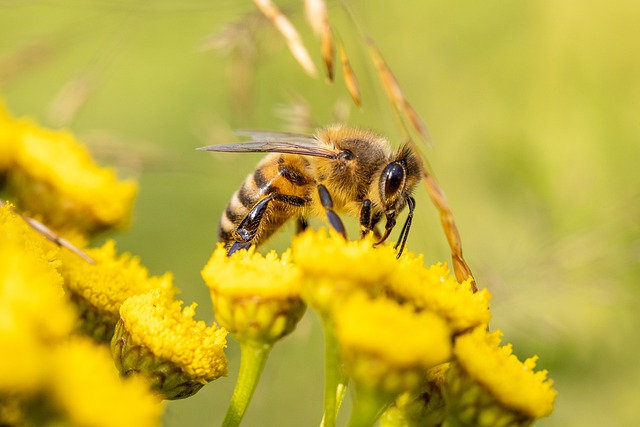Did you know that almost all of the world’s plants need to be pollinated? Bats, birds, beetles, bees, butterflies, wasps, and moths all play this essential role in ecosystems and are crucial in the reproduction of two-thirds of all crop species.
Sadly, pollinators are in decline. A decade ago, beekeepers in the United States and abroad started seeing a concerning drop in honeybee populations.
It is common for beekeepers to lose 15% of their hives each year from winter starvation and other factors. After 2004, beekeepers began to lose 30%, 40%, or even 50% of the hive population annually. There are likely several factors: parasites, persistent pesticides (neonicotinoids), and drought, habitat destruction, global warming, and more working together. Humans are responsible for pesticides and, largely, for habitat loss as well.

Although losses in honeybee populations can have a financial impact, losses in native pollinators can be less quantifiable, but equally important. Native pollinators provide essential agricultural services, estimated at more than $200 billion annually in the United States alone.
There is great diversity in the wild bee population of North America. There are roughly 4,000 species that are truly native to the continent and are highly adapted to native crops. Although honeybees are not going extinct, there are native bee extinctions that are taking place in the United States. The rusty patched bumblebee, for example, was once very common here and may go extinct this year.
While pesticide use, habitat loss, and the introduction of diseases are the main causes of declining pollinator populations, our gardens can be mini sanctuaries for pollinators. Follow these tips from the United States Forest Service to keep our pollen-loving friends healthy and plentiful.
Avoid hybrid flowers
To create the perfect bloom (like the popular “double” flowers), plant breeders often sacrifice pollen, nectar, and fragrance, which are unfortunately essential for pollinators.
Increase visibility of plants to pollinators
Design your garden to plant in groups or drifts rather than as single plants to enable pollinators to locate blooms, and plant a variety of colors to attract a variety of pollinators.
Provide larval host plants
To attract colorful butterflies, grow plants for their caterpillars to feed on. Some species, such as monarch butterflies, are only attracted to one or two plant species. Attract monarchs with milkweed, and black swallowtails with dill, carrot, parsnip, or parsley. Many larval host plants will experience leaf damage, an indication they are providing benefit, so locate them where they will not be an eyesore.
Create a salt lick for butterflies and bees
Provide damp soil with a drip hose or birdbath on bare soil, and mix in wood ash or sea salt into the mud. Some butterfly species also enjoy fruit, so leave out an over-ripe banana, apple, or orange on top of a sponge in a dish with slightly salted water for a nice snack.
Grow pollinator-attracting native plants
Native plants are four times more attractive than non-native plants to pollinators. In addition, native plants usually require less maintenance because they are ideally suited to the local environment.
Leave dead wood for nesting
Most bees are solitary species, meaning that a female bee will mate and they lay eggs in cells by herself. Providing dead trees or even dead limbs for nesting sites for native bees can help them thrive. Another option is to drill holes ranging from 3 to 5 inches deep on scrap lumber mounted on posts or eaves.
Add a hummingbird feeder
Make artificial nectar for your feeder by mixing four parts of water with one part of sugar. Never use artificial sweeteners, juice, or honey. Dissolve sugar and allow it to dry before placing it in a red-colored feeder.
Plant pollen and nectar sources
Cultivate a wide range of plants throughout the growing season. Include perennials and annuals with a variety of flower shapes and sizes. Also, grow night-blooming flowers to encourage moth and bat populations.








